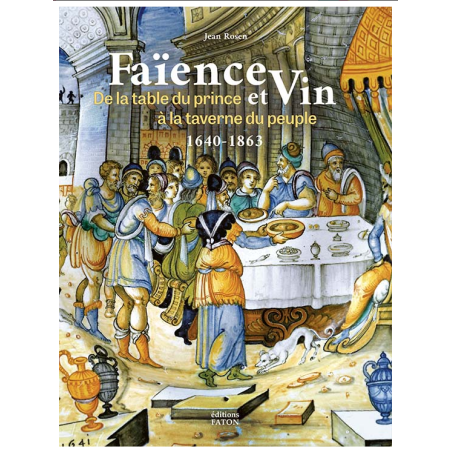



Le but de cette publication est de mettre en évidence la manière dont la faïence, par ses formes et ses décors, reflète l’évolution sociologique de la consommation du vin en France, du XVIIe siècle jusqu’à l’avènement de la société industrielle, et plus précisément de 1640, date de l’apparition officielle du mot faïence, jusqu’en 1863, date de la première apparition du phylloxéra.
Visa, MasterCard, Amex, Paypal or 3 times, interest-free with Scalapay

0.01€ from 35€ of purchase in France and from 99€ throughout Europe

Delivery in France and around the world at home, at office or in a pickup point

In wine as in faience, in an identical way, nature and culture are closely linked: in both cases, it is thanks to the ancestral and empirical knowledge of the properties of the land and grape varieties, combined with the delicate mastery of technical and physico-chemical constraints with complex interactions, that man succeeds, in the long term, in dominating nature.
This ability allows him to perform the almost alchemical transmutation of natural elements into consumer products intended to satisfy habits and tastes, revealing the characteristics of society and fashion at a given time. For François Rabelais as for Ernest Hemingway, "wine is the most civilized thing in the world."
The purpose of this publication is to highlight how faience, through its forms and decorations, reflects the sociological evolution of wine consumption in France, from the 17th century until the advent of industrial society, and more precisely from 1640, the official appearance of the word faience, until 1863, the first appearance of phylloxera.
Jean Rosen is Director of Research Emeritus CNRS - UMR 6298 ARTEHIS, Dijon
Data sheet

Le but de cette publication est de mettre en évidence la manière dont la faïence, par ses formes et ses décors, reflète l’évolution sociologique de la consommation du vin en France, du XVIIe siècle jusqu’à l’avènement de la société industrielle, et plus précisément de 1640, date de l’apparition officielle du mot faïence, jusqu’en 1863, date de la première apparition du phylloxéra.